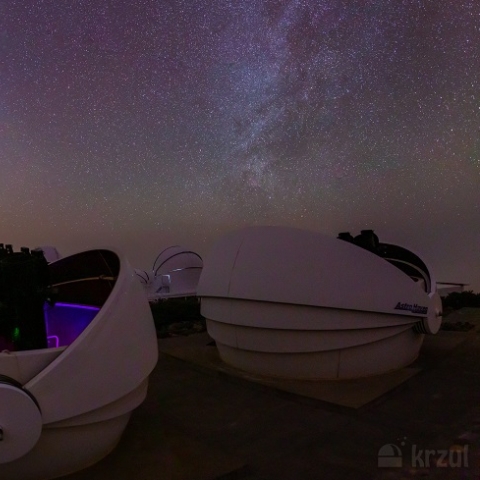

22 October 2024
5 min read
Thumbnail image credit: NASA
New observations from the James Webb Space Telescope (JWST) have confirmed a decades-old galaxy model, originally proposed by a University of Portsmouth Professor in 2005.
The findings are published today in Nature Astronomy and they resolve a long-standing debate about the contribution of specific types of stars to distant galaxies’ emissions, providing insight into galaxy formation and evolution.
Professor Claudia Maraston, from the University of Portsmouth’s Institute of Cosmology and Gravitation, published her models in 2005, which were met with controversy at the time due to their stark differences from existing theories.
She said: “My models, which were quite different from what was available in the literature, have been debated for years. We always believed that the ultimate test would come from observing distant galaxies with the advanced resolution that JWST is now capable of."
The observations, made possible by the JWST’s unparalleled ability to capture detailed infrared data, reveal that thermally pulsing asymptotic-giant-branch (TP-AGB) stars contribute more significantly to the light from distant galaxies than previously thought.
The breakthrough is crucial for understanding the true physics of galaxies - when they form, how big they are, and how they evolve.
It has far-reaching implications for how astronomers calculate key properties of galaxies, and offers new insights into the makeup of these galaxies and the stars within them.

This result is a personal triumph after 20 years of debates and discussions. It’s incredibly satisfying to finally have the data that confirms the models we developed so long ago.
Claudia Maraston, Professor of Astrophysics
Professor Maraston added: “This is the first time we’ve been able to see the complete emission spectrum of these galaxies with such precision. The JWST’s larger size and its ability to detect infrared light make it possible to capture these galaxies as they appeared 10 million years ago.
“One galaxy was so massive and luminous that we were seeing it at a better resolution than nearer galaxies with telescopes from the ground. The signal was so clear we were seeing detailed spectral features that were previously impossible to detect. It really was showcasing the JWST in its full glory!”
The Hubble telescope is an optical instrument, but the JWST is three times bigger and can collect more radiation from fainter sources. This means it can detect optical and near-infrared light making it possible to capture these galaxies from so long ago.
The success of these observations has earned Professor Maraston and her colleagues more observation time with JWST, and they will soon obtain a larger programme to study 100 more galaxies. She said: “This result is a personal triumph after 20 years of debates and discussions. It’s incredibly satisfying to finally have the data that confirms the models we developed so long ago.”
Professor Maraston worked with colleagues from Nanjing University in China and Paris-Saclay University in France. Her French collaborator, Emanuele Daddi, played a key role in finding the crucial galaxy data in the JWST archives. Shiying Lu was the PhD student who performed the comparison between models and data.
Together, they plan to refine and improve the models further in light of these new observations.
Professor Maraston said: “I’m not an observer, but seeing what the galaxy looked like so far away was breathtaking. For an astrophysicist to see that detail - to see Carbon, Titanium, and Sodium absorptions in detail was incredible.”
The paper 'Strong spectral features from asymptotic giant branch stars in distant quiescent galaxies’ is published today.
You might also like...
Students commence first ever UK space degree apprenticeship programme
Five space enthusiasts have begun studying the UK’s first ever Space Systems Engineering degree apprenticeship at the University of Portsmouth.
2 October 2024
7 minutes

New cosmic distance catalogue to unlock the mysteries of Universe formation
A new catalogue providing information on millions of distant galaxies, which determines their distances with unprecedented precision over a field of view and depth never before explored, has been published today.
18 September 2024

Citizen science project identifies 20 new astronomical discoveries
23 August 2024
8

